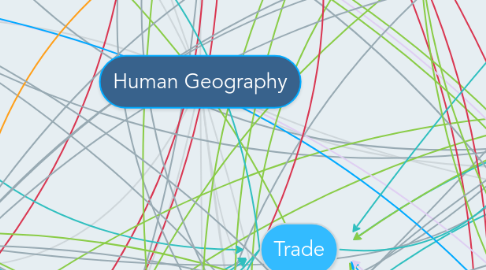Human Geography
af Albert Louis Bustos


1. Preservation
1.1. Post-humanism
1.2. Protected areas
1.2.1. Buffer Zones
2. Conservation
2.1. Sustainable development
3. Exploitation
4. Environmental Justice
5. Power
6. Cultural Ecology
6.1. Structuralism
6.2. Colonialism
6.3. Dependency Theory
6.4. World Systems theory
6.5. Modernization Theory
7. Political Ecology
7.1. Post-structuralism
7.2. Agency
7.3. Environmental Kuznets Curve
8. Economy
8.1. Tragedy of the commons
8.2. Cowboy Economics
8.3. Kuznets Curve
9. Energy
9.1. Nuclear
9.2. Hydroelectric
9.3. Geothermal
9.4. Solar
9.5. Wind
9.6. Biofuels
10. Global Water cycle
10.1. Human Intervention
11. Extinction
12. Biodiversity
12.1. Ecotourism
13. Famine
14. Population Change
14.1. Demographic Transition Model
14.2. Pro-Natalist
14.3. Anti-Natalist
15. Consumption and Population
15.1. Carrying Capacity
15.2. Malthusian Perspective
15.2.1. NeoMalthusian
15.3. Neostructuralism
15.4. Cornucopian Perspective
16. Politics of Scale
17. Greenhouse Effect
18. Temperature
19. Policies
19.1. Montreal Protocol
19.2. REDD
19.3. Kyoto Protocol
19.4. Earth Summit
19.5. Copenhagen Accord
19.6. Paris climate Talks
19.6.1. Joint Implementation
19.7. Endangered Species Act- - 1973
19.7.1. Habitat Conservation Plans
20. Carbon Sequestration
21. Climate Justice
22. Antropogenic Climate Change
22.1. Stratospheric Ozone Depletion
22.1.1. CFCs
22.2. Acid Deposition
22.3. Air Pollution
22.3.1. thermal inversion
22.3.2. radiation inversion
22.3.3. Local air pollution
23. Physical Geography
23.1. Atmosphere
23.2. Hydrosphere
23.3. Lithosphere
23.4. Biosphere
24. Vulnerability
24.1. Material
24.2. Attitudinal
24.3. Institutional
25. Natural Hazards
26. Scale
27. Risk Perception
28. Trade
29. Food
29.1. Extensive Agriculture
29.2. Intensive Agriculture
29.3. Subsistence Agriculture
29.3.1. Pastoralism
29.4. Commercial Agriculture
29.4.1. Monoculture
29.4.2. CAFOs

